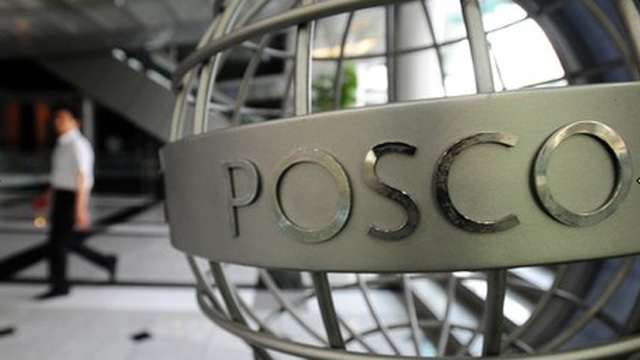
by Editor | May 25, 2021 | Uncategorized

by Editor | May 25, 2021 | Uncategorized
Mining firms have criticised the Indian government’s decision to make them pay more tax to help develop tribal areas affected by the Maoist uprising.
Various trade associations have denounced the bill, under which firms will pay up to 26% more tax on profits.
The new legislation is to be introduced during the new parliamentary session which started on Monday.
Maoist rebels say they are fighting for the rights of indigenous tribal people and the rural poor.
They are active in several eastern and central states.
‘Holistic reform’
The mining companies have compared the proposed legislation with what they say is the unjust Black Economic Empowerment Act (BEE) of South Africa, launched to redress the inequalities of apartheid.
They say that the move will make mining companies globally uncompetitive and will affect growth and employment.
However various non-governmental organisations and anti-mining activists have welcomed the proposed legislation.
A government-appointed committee – headed by the Finance Minister Pranab Mukherjee – has doubled the new tax, which will result in mining companies paying the government to extract “non coal” mineral resources.
Coal companies will have to pay 26% additional tax on profits.
The bill going through parliament seeks “holistic reform” for “local area development” especially for “families impacted by mining operations”, a government release said.
Last year the chief minister of Chhattisgarh, a state where Maoists have a huge presence, pressed India’s central government for a 10% surcharge on mining profits so that impoverished rural areas could be developed and people discouraged from joining the rebels.
Mining companies argue that Maoist-affected states have “influenced” the central government to tax them.
The Federation of Indian Mineral Industries argues that the funds are there, but are not being delivered to the right areas.
Industry sources told the BBC that they will now press the government during the current session of parliament to “retract” the move.
‘Astronomical profits’
India’s mineral resources are mostly found in areas inhabited by indigenous tribal populations.
Private companies are accused of using coercive strategies to take away tribal land – often by using government security agencies or private vigilante forces.
Villagers say they often receive little or no compensation for their land. They also complain of a lack of health care, schools and proper sanitation.
A recent report published by the Delhi-based Centre for Science and Environment suggested that most of the major mining areas in India are in the 150 least developed districts in the country.
“Mining companies are making astronomical profits, they pollute the environment, displace the local population and they do not pay additional tax… is it reasonable?” asked lawyer Sudeep Srivastava.
He argues that the global demand for minerals will “compel” the companies to pay additional tax.
However the government’s announcement to charge additional taxes has resulted in the the stocks of both state-owned coal companies and private companies taking a heavy beating.

by Editor | May 25, 2021 | Uncategorized
The mining scandal which led to the unseating of a prominent leader in India’s southern state of Karnataka is the latest scandal to hit the industry.
BS Yeddyurappa of India’s main opposition Bharatiya Janata Party (BJP) quit recently after an anti-corruption report named him as a key suspect in a scam which allegedly cost the exchequer more than $3bn (£1.8bn). Mr Yeddyurappa denies any wrongdoing.
But what is undeniable is that illegal mining has been rife for years in Karnataka. The state produces about 45 million tonnes of iron ore a year and exports more than half of it to China.
It is not the only state in India where mining has become a controversial trade.
South Korean company Posco’s plan to build a $12bn steel plant – India’s largest foreign investment project – in the eastern state of Orissa has run into heavy weather over how much iron ore it should be allowed to export. More recently, acquiring land from the farmers for the plant has also become a problem.
Controversial
And last August India rejected controversial plans by mining group Vedanta to extract bauxite in the Niyamgiri area of Orissa.
The company has proposed a $2.7bn investment in the area, a project which it says will bring jobs and development to one of the country’s poorest districts. It has previously said it has complied with all rules and regulations.
The local tribespeople say the mining project will destroy their sacred hill and their source of livelihood.
Why has mining become a source of massive corruption in India?
For one, India is rich in lucrative minerals.
It is the world’s largest producer and exporter of mica, the third largest producer of coal and the second largest producer of barites.
India is also the world’s fourth, fifth and seventh largest producer of iron ore, bauxite and manganese respectively.
Some of the most mineral-rich parts of the country are situated in regions that are home to some of the poorest tribal communities.
These places comprise a third of India’s area and are also hotbeds of Maoist insurgency – largely a consequence of sharp inequalities in income and wealth.
Over the last two decades, India has opened up mining to private companies without strong and independent regulation.
A note from the federal ministry of mines talks about the mixed results of this opening up.
It says “legal and regulatory loopholes and inadequate policing has allowed the illegal mining operations to flourish and grow”.
So much so an ombudsman report on mining in Karnataka found that the promoters of privately owned mining companies in the Ballery region – where most of the mines are located – paid off politicians, and then joined politics themselves, rising to positions in the state government.
These mining businessmen-turned-politicians exerted so much influence over the local officials that the Indian media began describing Bellary as a “new republic”.
Ugly underbelly
Investigations have shown that while the government receives paltry royalties from private mining companies, a few influential oligarchs in collusion with politicians have made massive profits.
No wonder that for many in India, mining has come to epitomise the ugly underbelly of economic liberalisation – crony capitalism and rampant loot of natural resources.
The mines ministry now admits that “mining activities have resulted in little local benefit and, in fact, has been at the cost of environmental degradation”.
Now the government plans to amend a 54-year-old law to make it mandatory for mining companies to put in place rehabilitation and resettlement programmes for the people affected by their activities and protect the environment.
Otherwise, as the government itself concedes, mining will continue to contribute to social dissatisfaction and unrest.
India cannot afford to stop mining if its economy has to grow.
But it needs stronger regulation and a fair deal to the communities that live on lands rich in minerals.
Only then India’s “resource curse”, as many economists describe the dichotomy of the poorest living on the richest lands, can be turned into a “resource boon”.

by Editor | May 25, 2021 | Uncategorized
South Korean firm Posco says it has scrapped a proposed steel project in the Indian state of Karnataka after delays and local opposition.
The company said it had dropped the $5.3bn (£3.5bn) project in the state’s Gadag area after protests against the acquisition of land for the plant.
The decision is a blow to India’s efforts to attract foreign investment.
But Posco is proceeding with a planned $12bn plant in eastern Orissa state, which has faced similar protests.
The firm blamed its decision to pull out of Karnataka on “the significant delay in the project and inability to get land in Gadag”.
“Progress on land acquisition was held back due to agitations by some farmers and religious leaders,” the firm said in a statement, which made clear that land acquisition talks had come to a halt as far back as July 2011.
Posco and Karnataka had signed the agreement three years ago and the plant, when completed, was to produce 6 million metric tons of steel a year with iron ore to be mined locally.
Earlier this month, the state government returned $10m (£6.6m) to Posco that the firm had deposited as an initial payment for acquiring land for the plant.
Posco, however, said it may consider returning to Karnataka “in future, if we get an attractive business proposal from the state”.
The much larger Posco project in Orissa has also faced stiff opposition from local people campaigning to save farmland and woodland.
But the land acquisition for the project has been completed, and the plans to build the plant are on track.
The Orissa plant, which will be based in the port city of Paradip, was conceived in 2005 and is India’s single biggest foreign investment.
It is expected to create nearly 50,000 jobs.

by Editor | May 25, 2021 | Uncategorized
In a field in India’s western desert state of Rajasthan, row after row of trees covered in lush, green leaves stretch into the distance as the sun beams down from a pale blue sky.
A farm worker kneels down and fights off the wind to grab hold of a thin branch with a few olives on it.
“You see that they are green. Slowly, they will turn red and will be ready to be made into oil in a few months during harvest,” he says.
In September, commercial production of olive oil will begin in Rajasthan as part of India’s ambitious plan to become a leading international producer to rival countries like Spain, Italy and Greece.
Yogesh Verma from Rajasthan Olive Cultivation Limited, a state government-funded agency spearheading the project, says that since 2008, more than 144,000 olive trees have been planted on almost 260 hectares (642 acres) of government and private land in the state, which, with its long, dry summers and short, cool winters, offers the perfect conditions for growing olives.
Subsided farming
“In 2007, no-one even believed that olives can grow here,” Mr Verma said. “But look now.”
It is only the beginning, with plans to expand to 5,000 hectares over the next three years.
Farmers, many of whom had never seen or heard of olives before, are coming around to the idea.
To entice them, the Rajasthan government is offering subsidies.
Each olive tree costs 130 rupees ($2.19; £1.40) to plant but farmers pay just 28 rupees. And 90% of the cost of setting up a drip irrigation system, which is expensive to install but uses water more efficiently, is covered.
Sahabram Saharan, 52, for decades grew wheat and cotton, which require a lot of water.
But in April, he planted his first olive trees across 10 hectares at his farm in the village of Madera close to the Pakistan border. In August, he plans to add five more hectares.
“There’s a scarcity of water in Rajasthan. There’s not enough,” he said.
“I know olive trees last for 100 to 150 years. That’s why I decided to plant them. I’ve just started, but in four years, olives will begin to grow. I know people make oil from olives. I will do the same.”
There is huge potential to increase the area under cultivation in Rajasthan, which is two-and-a-half times larger than Greece, the world’s third largest producer of olives.
A sophisticated refinery using machinery from Italy will soon be ready to press olive oil in Rajasthan, and the plan is to tap into the rising demand in the domestic market.
Data published in April from the Madrid-based International Olive Council showed imports of olive oil, largely from Spain and Italy, climbed by 48% between October 2012 and February 2013 compared to the same period a year earlier.
Growing awareness
A growing number of Indians are becoming aware of the supposed health benefits of olive oil, which has been shown to lower high blood pressure and reduce the risk of heart disease, stroke and certain cancers.
“When I came here for the first time, I could not find a single bottle of olive oil. I found it only in pharmacies, small bottles for the skin. Now you find it everywhere,” said Gideon Peleg, an Israeli agriculture expert who has been working with Rajasthan Olive Cultivation Limited.
Around 25 tonnes of olive oil will be pressed this year from September, according to Mr Verma, and he believes it could be available in Indian stores as early as next year.
A litre of imported extra virgin, the highest quality of olive oil, costs 750 rupees (£8; $12) at a New Delhi supermarket. The hope is with domestic production, prices will fall so that more Indians can enjoy the product.
The next challenge will be marketing Rajasthani olive oil, which Mr Peleg describes as a “weak point”.
Spain, the world’s biggest producer which last year accounted for around 50% of total production worldwide, has spent millions of dollars to promote its olive oil domestically and internationally.
For India to fulfil its global ambitions, it will have to do the same.
“Any consumer good requires a marketing programme and a sales network,” said VN Dalmia, president of the Indian Olive Association and owner of the Leonardo Olive Oil brand in India.
“Olive oil from Rajasthan will need to overcome a low quality perception.”





